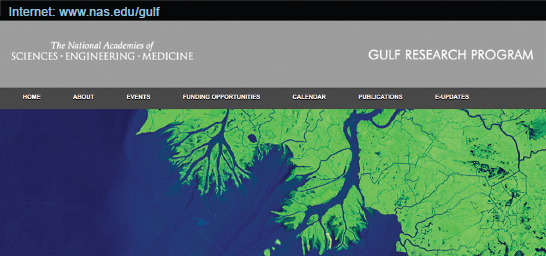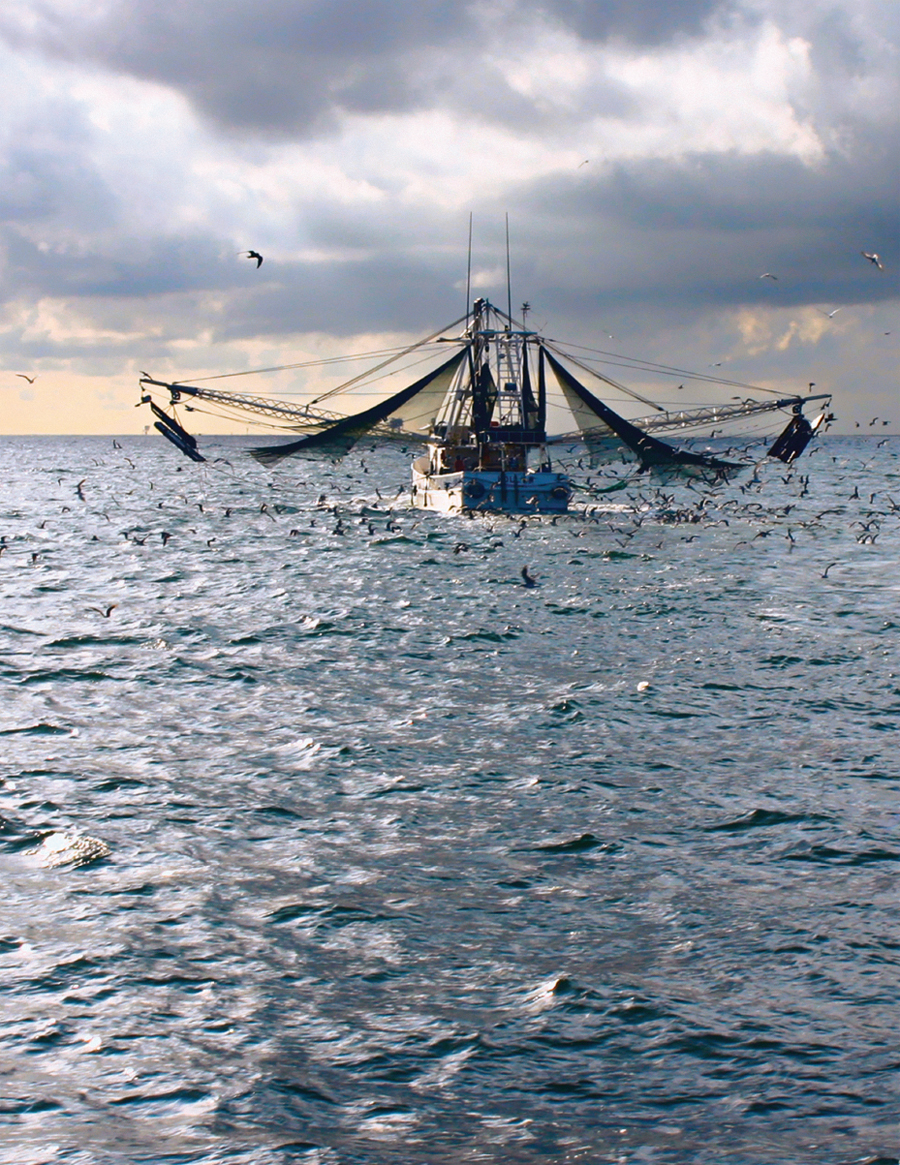GULF RESEARCH PROGRAM ADVISORY GROUP MEMBERS
June 2013–September 2014
Barbara A. Schaal, (Chair), NAS,
Washington University, St. Louis, Missouri
Donald F. Boesch
University of Maryland, Cambridge
Robert S. Carney
Louisiana State University, Baton Rouge
Stephen R. Carpenter, NAS
University of Wisconsin, Madison
Cortis K. Cooper
Chevron Corporation, San Ramon, California
Courtney Cowart
Sewanee: The University of the South, Sewanee, Tennessee
Robert A. Duce
Texas A&M University (emeritus), College Station
Deborah Estrin, NAE
Cornell New York City Tech, New York
Christopher B Field, NAS
Carnegie Institution for Science, Stanford, California
Gerardo Gold-Bouchot
Center for Research and Advanced Studies at Mérida, Yucatan, Mexico
Lynn R. Goldman, NAM
George Washington University, Washington, DC
Bernard D. Goldstein, NAM
University of Pittsburgh Graduate School of Public Health, Pittsburgh, Pennsylvania
Thomas O. Hunter
Sandia National Laboratories (retired), Albuquerque, New Mexico
Shirley Ann Jackson, NAE
Rensselaer Polytechnic Institute, Troy, New York
Ashanti Johnson
University of Texas, Arlington, and Institute for Broadening Participation, Damariscotta, Maine
David M. Karl, NAS
University of Hawaii, Honolulu
Molly McCammon
Alaska Ocean Observing System, Anchorage
Linda A. McCauley, NAM
Emory University, Atlanta, Georgia
J. Steven Picou
University of South Alabama, Mobile
Eduardo Salas
University of Central Florida, Orlando
Kerry Michael St. Pé
Barataria-Terrebonne National Estuary Program (retired), Thibodaux, Louisiana
Arnold F. Stancell, NAE
Mobil Oil (retired), Greenwich, Connecticut
LaDon Swann
Mississippi-Alabama Sea Grant Consortium and Auburn University, Ocean Springs, Mississippi
James W. Ziglar
Van Ness Feldman, Washington, DC
Mark D. Zoback, NAE
Stanford University, Stanford, California
Gulf Research Program Staff
Chris Elfring, Executive Director
Patrick Koroma-Tommy, Grant Systems Specialist
Bethany Mabee, Communications Officer
LeighAnne Olsen, Senior Program Officer
Evonne Tang, Senior Program Officer
Scott Thompson, Postdoctoral Fellow
Teri Thorowgood, Administrative Officer
Kim Waddell, Senior Program Officer
Maggie Walser, Senior Program Officer
Gulf Research Program Publications
Opportunities for the Gulf Research Program: Community Resilience and Health: Summary of a Workshop (2015)
http://www.nap.edu/catalog/21691/opportunities-for-the-gulf-research-program-communityresilience-and-health
Opportunities for the Gulf Research Program: Monitoring Ecosystem Restoration and Deep Water Environments: Summary of a Workshop (2015)
http://www.nap.edu/catalog/21673/opportunities-for-the-gulf-research-program-monitoringecosystem-restoration-and-deep-water-environments
Opportunities for the Gulf Research Program: Middle-Skilled Workforce Needs: Summary of a Workshop (2014)
The Gulf Research Program: A Strategic Vision (2014)
http://www.nas.edu/gulf/vision/index.htm
Contact Information
Phone: (202) 334-1973 Email: gulfprogram@nas.edu

![]()
The National Academy of Sciences was established in 1863 by an Act of Congress, signed by President Lincoln, as a private, nongovernmental institution to advise the nation on issues related to science and technology. Members are elected by their peers for outstanding contributions to research. Dr. Ralph J. Cicerone is president.
The National Academy of Engineering was established in 1964 under the charter of the National Academy of Sciences to bring the practices of engineering to advising the nation. Members are elected by their peers for extraordinary contributions to engineering. Dr. C. D. Mote, Jr., is president.
The National Academy of Medicine (formerly the Institute of Medicine) was established in 1970 under the charter of the National Academy of Sciences to advise the nation on medical and health issues. Members are elected by their peers for distinguished contributions to medicine and health. Dr. Victor J. Dzau is president.
The three Academies work together as the National Academies of Sciences, Engineering, and Medicine to provide independent, objective analysis and advice to the nation and conduct other activities to solve complex problems and inform public policy decisions. The Academies also encourage education and research, recognize outstanding contributions to knowledge, and increase public understanding in matters of science, engineering, and medicine.
Learn more about the National Academies of Sciences, Engineering, and Medicine at www.national-academies.org.

CREDITS
| Front cover: | ©iStock/Levranii |
| Page 2: | Photo by Christopher Michel |
| Page 3: | ©iStock/DenisTangneyJr |
| Page 6: | ©iStock/Rob_Ellis |
| NOAA | |
| ©iStock/YinYang | |
| Page 7: | ©iStock/fotoguy22 |
| Page 14: | NOAA |
| Page 20: | ©iStock/tmccall |
| Back cover: | NURC/UNCW and NOAA/FGBNMS |

Over its 30-year duration, the Gulf Research Program will work to enhance oil system safety and the protection of human health and the environment in the Gulf of Mexico and other U.S. outer continental shelf areas by seeking to improve understanding of the region’s interconnecting human, environmental, and energy systems and fostering application of these insights to benefit Gulf communities, ecosystems, and the Nation.
![]()
The nation turns to the National Academies
of Sciences, Engineering, and Medicine for
independent, objective advice on issues that
affect people’s lives worldwide.
www.national-academies.org






